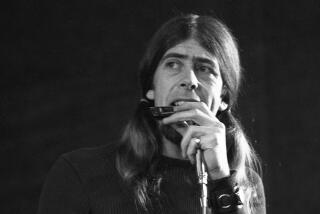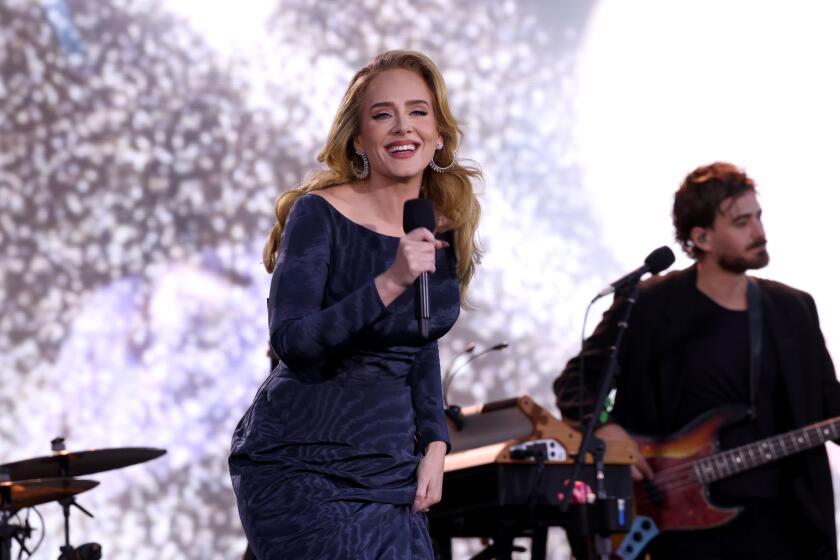JAZZ REVIEW : Morgan Updates Be-Bop
HUNTINGTON BEACH — The way Lanny Morgan plays the alto saxophone, you’re inclined to say: “These are the good old days.”
Morgan, who performed Friday at Maxwell’s, works mainly in the rich be-bop vein of the ‘40s, and his fluid approach reveals more than a smidgen of the style of Charlie Parker, that era’s preeminent saxophonist, as well as such later masters as Phil Woods and Cannonball Adderley, who came along in the ‘50s.
Like Woods, Morgan--who rose to prominence with Maynard Ferguson’s band in the early ‘60s--brings the be-bop mode up to today. He makes it contemporary, playing with a vibrancy and insouciance that is anything but dated.
His sound is dynamic--a bold, juicy sound that seems to squirt forth feeling as if it were an orange being squeezed. It’s a powerful sound, too, one that didn’t require amplification.
Morgan plays lead alto with a number of big bands (Bill Holman’s among them), has long been a featured member of Supersax and just got off a long road trip with singer Natalie Cole.
He selected tunes for his second set from his favored era, giving listeners evergreens such as “It’s You or No One,” “Scrapple From the Apple” and “Lover Man.”
“It’s You . . . ,” taken at a breakneck tempo, kicked the set off and found Morgan roaring out of the gate like a keyed-up thoroughbred. He closed his eyes and blew phrases that danced over the spirited, savoir-faire backing of pianist George Gaffney, bassist Jim De Julio and drummer Jimmy Dee.
Morgan’s solos here were a textbook method of how to play be-bop. In complete command of his instrument--his fingers rarely moved far from his horn’s keys--he offered bubbly, scale-wise lines that roamed up his alto, where the notes became as bright as headlights on a dark road. He then turned the phrase around and headed back to lower, grittier tones that sometimes seemed as gruff as a bark.
Morgan also liked to deliver brief, four-note ideas that seemed to spin in the air, and he dropped in the occasional blues-based idea that added to the improvisation’s essential earthiness. He also offered shining high notes, sustaining them so they created a large block of sound.
Morgan and De Julio played the melody to Parker’s “Scrapple” together, sans piano and drums, then the bassist offered one of his characteristically inventive solos, reinterpreting the melody at some points, playing long runs at others and at other times plucking low, rumbling tones.
The altoist found the tune ideally suited to his style. Seemingly without effort he moved from phrases with notes played so fast they smeared, to ideas that started at the bottom of his horn and leapt, pole-vault-like, to the top of his horn’s range.
A persuasive bluesiness dominated Morgan’s version of “Lover Man,” while “The Theme” again exhibited his ability to play superlatively at a riotously fast tempo.
Gaffney played rhythmically charged chords for Morgan, giving him a flexible platform from which to work. In his solos, the pianist was likewise on his toes, delivering fluid lines that had a resounding rhythmic bite and more than a bit of melodic grace.
More to Read
The biggest entertainment stories
Get our big stories about Hollywood, film, television, music, arts, culture and more right in your inbox as soon as they publish.
You may occasionally receive promotional content from the Los Angeles Times.










